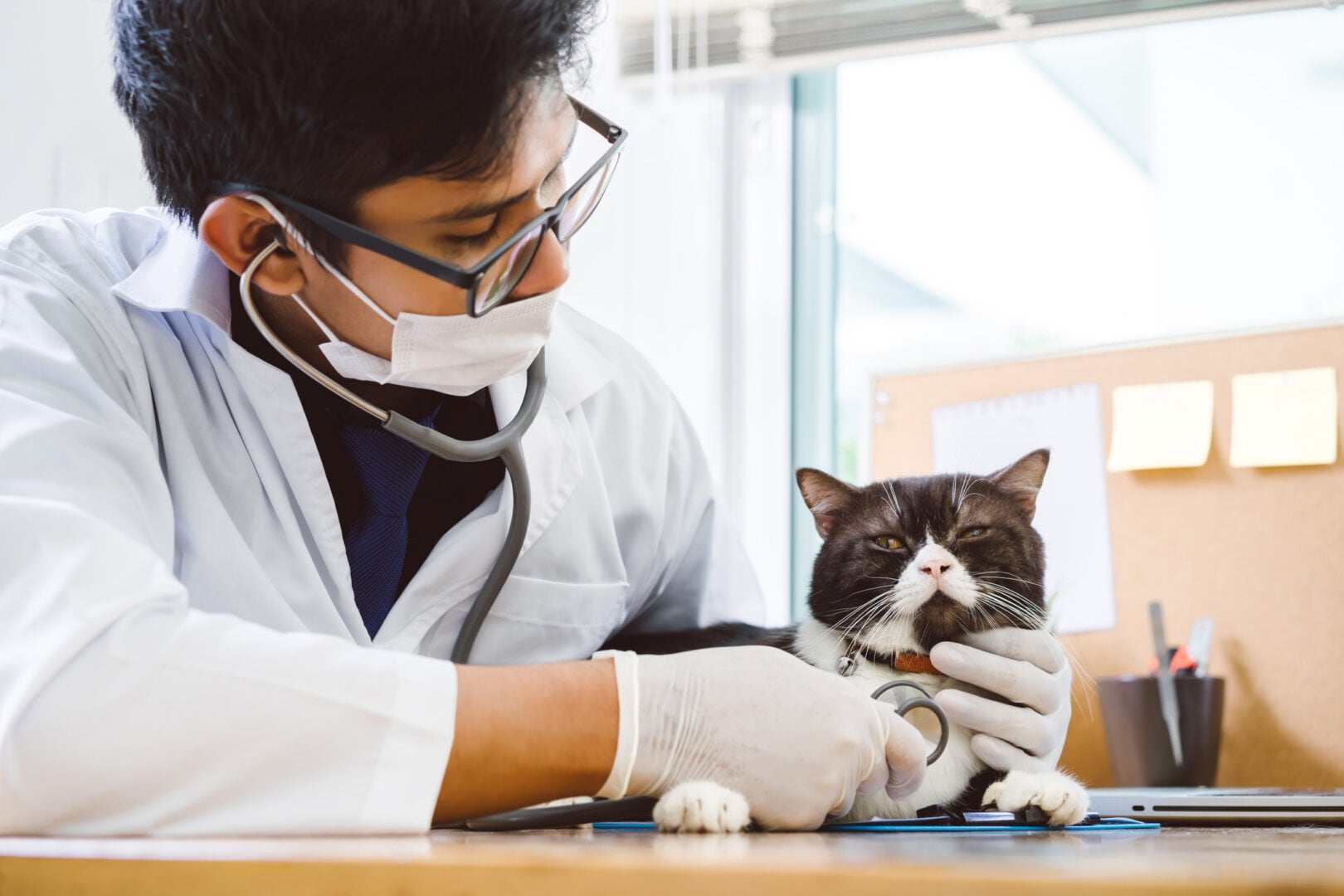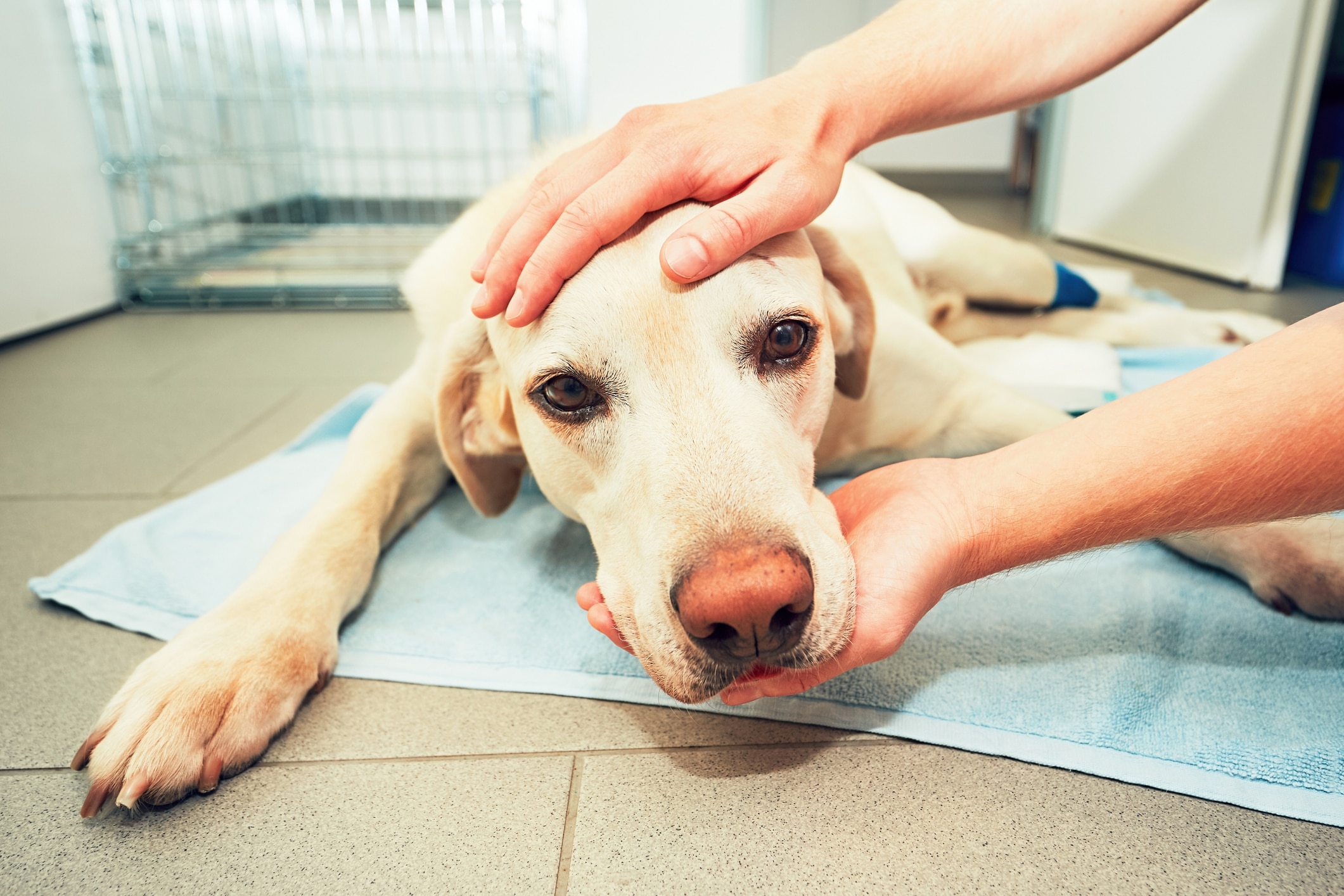In this article
Feline panleukopenia, also known as distemper, is a highly contagious but often curable disease. Not sure how to tell if your pet has caught it?
Here’s an overview of distemper in cats, including the symptoms you should look out for and what you can do to prevent your furry friend from becoming infected.
Key takeaways
- Feline panleukopenia, also known as distemper, is a highly contagious virus that spreads among cats. It is primarily caused by a single-strand DNA virus called feline parvovirus.
- It’s easy for the virus to spread into the environment, including pet bedding, food and water bowls, litter boxes and owner clothing. Kittens and cats become infected when they come into direct contact with an infected cat or contaminated environments.
- Symptoms of feline panleukopenia include sneezing, runny nose, fever, diarrhea and refusal to eat. In severe cases, it can also cause loss of balance and difficulty walking.
- Distemper is considered curable by veterinarians, and there are treatments available. The main way that you can prevent your cat from contracting distemper is to make sure that he or she is vaccinated.
What is distemper in cats?
Feline distemper is primarily caused by a single-strand DNA virus called feline parvovirus, says Dr. Mary Fuller, a veterinarian from Minneapolis, Minnesota. According to Dr. Fuller, the virus can be shed through a cat’s bodily secretions, including saliva, nasal discharges and urine, but it is most commonly shed through feces.
“Once shed, it’s easy for the virus to spread into the environment, including pet bedding, food and water bowls, litter boxes and owner clothing,” she explains. Kittens and cats become infected when they come into direct contact with an infected cat or contaminated environments.
Symptoms of distemper in cats
“Initial symptoms are usually those of an upper respiratory infection,” explains Dr. Cathy Alinovi, a veterinarian and the owner of Healthy PAWsibilities in Pine Village, Indiana. As the disease progresses, the symptoms become more severe.
Here are 14 common feline distemper symptoms to be aware of:
1. Excessive sneezing
If your cat is infected, she may have sneezing fits that last for long periods of time.
2. Runny nose
Your cat may have a hard time breathing due to a runny nose.
3. Discharge from eyes
Your pet’s eyes may be runny and watery.
4. Presumed headache
If your cat refuses to be petted, it may be because she has a headache.
5. Fever
For cats, a fever constitutes a temperature of 104 degrees or higher.
6. Dehydration
If your cat has a high temperature, she will need to drink more water to replace what the fever is burning up. If she does not do so, she may become dehydrated.
7. Loss of balance
As this disease affects your cat’s cerebellum, she may lose her sense of balance.
8. Difficulty walking
Distemper causes nerve damage, so your cat may struggle to walk.
9. Sudden onset of diarrhea
If the infection has spread into your cat’s intestines or bone marrow, she may experience bouts of diarrhea.
10. Vomiting
Your cat may have vomiting episodes that last for several hours.
11. Refusal to eat
Even though your cat may go near her bowl and appear to be hungry, she might not actually eat anything.
12. Lethargy
Your pet may experience a lack of energy or sleep excessively.
13. Depression
If your cat meows excessively or exhibits aggressive behavior, such as hissing, these might be signs that she is depressed.
14. Reduced white blood cell count
Your pet may get sick often because this disease has made her more susceptible to other viruses.
How likely is it for a cat to contract distemper?
According to Dr. Alinovi, the likelihood of your cat contracting feline distemper from another cat depends on the strain of the virus. “Some years, panleukopenia is a real killer,” she says, “just like some years the human flu is really bad. Some strains of the virus are quite deadly, while other strains are not so bad.” As such, cat rescue centers and animal shelters will periodically experience an influx of feline distemper infections.
How can you prevent distemper in cats?
The main way that you can prevent your cat from contracting distemper is to make sure that she is vaccinated. “The American Association of Feline Practitioners considers this a core vaccine, meaning that they recommend that all cats be vaccinated against this virus,” states Dr. Fuller.
But even though a vaccination can reduce your cat’s risk of contracting distemper, no vaccine is one hundred percent effective, she warns. “You will still want to have new kittens and cats evaluated by your veterinarian before bringing them into your home.” According to Dr. Alinovi, you can also prevent the spread of feline distemper by washing your hands between touching different groups of animals, and making sure your cat sitter always washes their hands between handling different animals.
Is distemper in cats curable?
Distemper is considered curable. “If the cat’s immune system is strong enough, and the supportive care being provided by the medical staff is aggressive enough, some cats can survive this infection,” says Dr. Alinovi. “Ultimately, whether a cat survives depends on how strong its immune system is, if it also has worms and how good its food is.
“But certain symptoms of distemper may cause your cat’s health to decline rapidly. For instance, if your cat can’t smell his food, he might not eat the amount of food that is necessary for him to survive. That’s where we really lose cats to distemper,” says Dr. Alinovi.
Overall, the survival rates vary on a yearly basis. There are some years when only 10 to 20 percent of infected cats pass away, while shelter losses can be quite high over other years, with 70 percent of infected cats not recovering from this disease, explains Dr. Alinovi.
Treatment for distemper in cats
“Cats are kept hydrated through syringe-feeding water, raw goats’ milk or fermented fish broth, so they can have some nutrition and energy while they fight the virus,” explains Dr. Alinovi. If your cat shows signs of a bacterial infection, your vet will administer antibiotics, she says.





